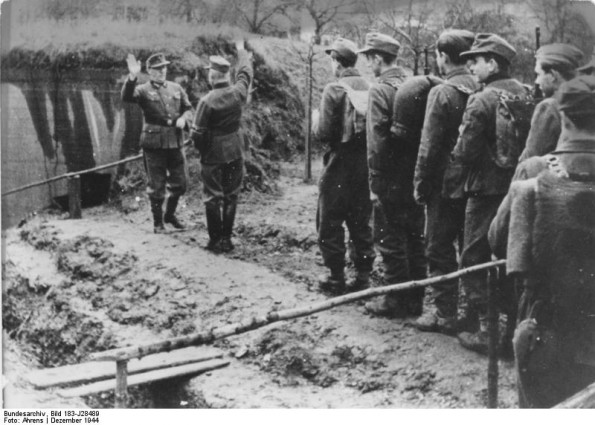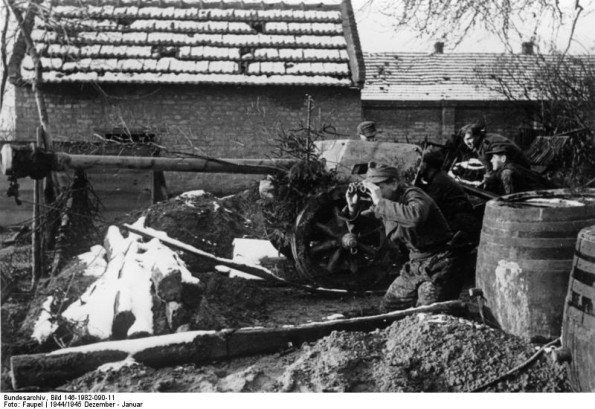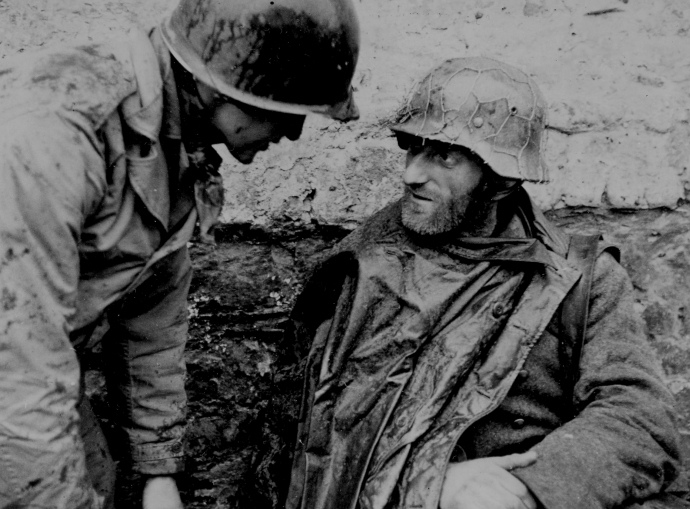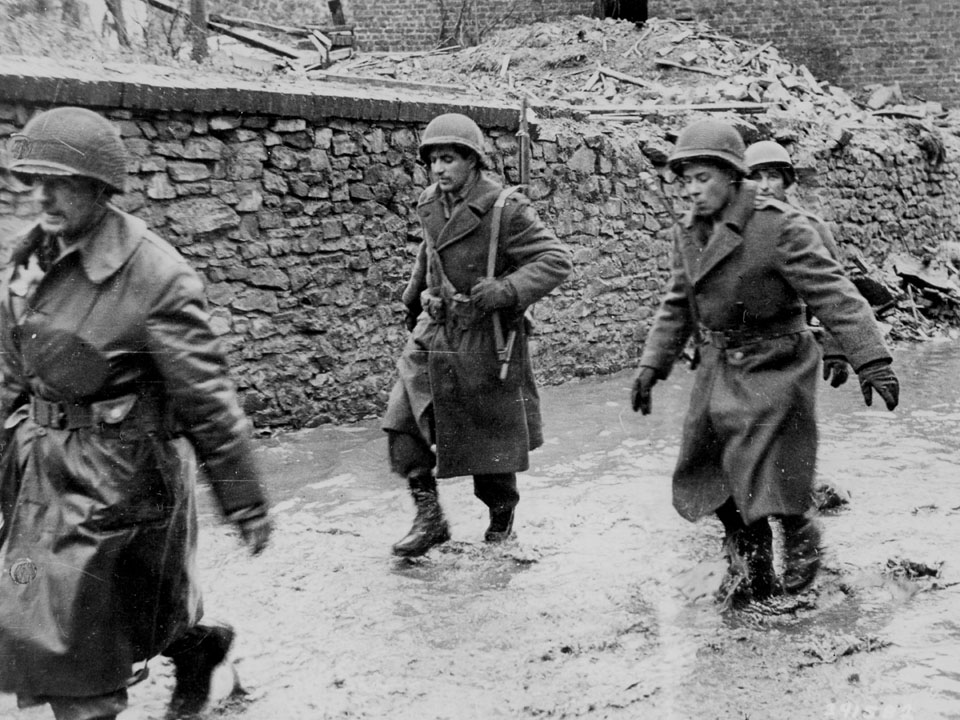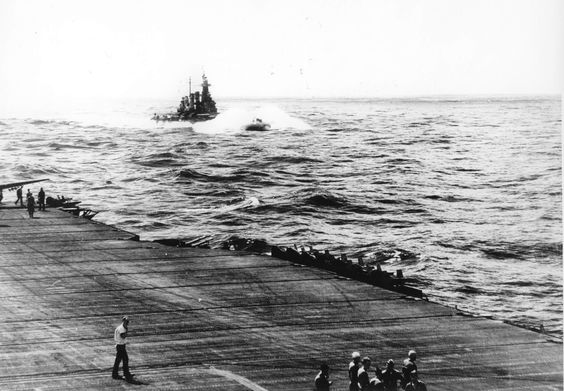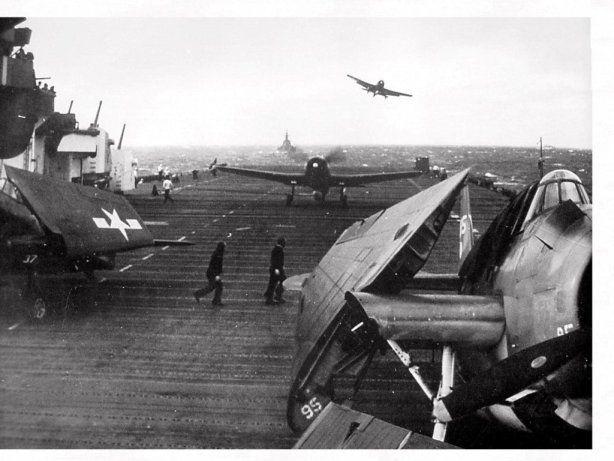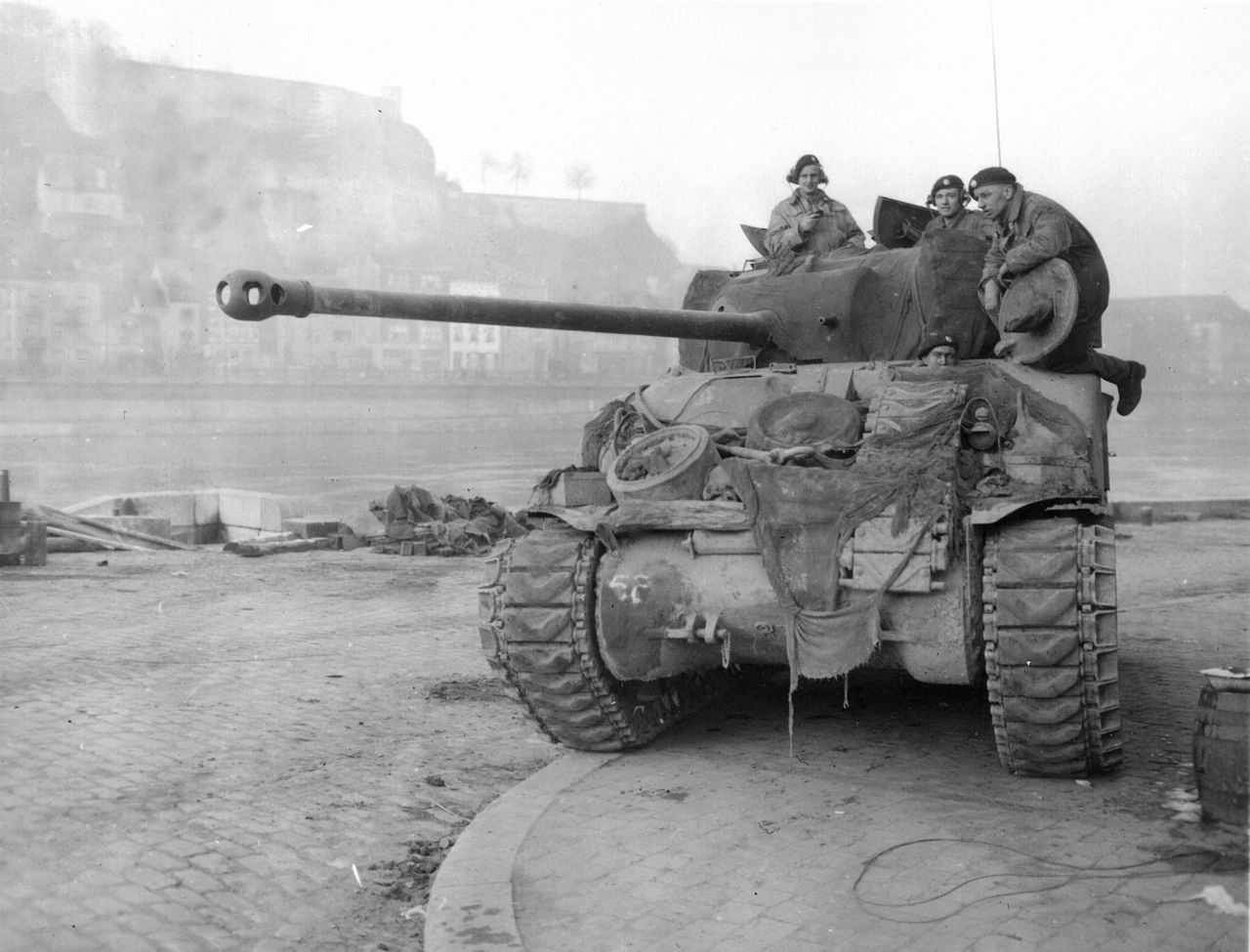Air Operations, CBI
BURMA- 10th Air Force B-25s attack stores near Lashio.
- More than 40 10th Air Force fighter-bombers attack a Japanese Army headquarters, troops, motor vehicles, town areas, and supplies at 7 locations.
- More than 20 P-47s attack bridges at 6 locations.
- 6 14th Air Force B-25s attack Kutkai.
- Fighter-bombers attack Wan Pa-Hsa.
- Several 14th Air Force fighter-bombers attack the Yangtong airfield with napalm.
- Several dozen fighter-bombers attack various targets at Changsha, Hengyang, Hochih, Kweilin, and several other locations.
- 14th Air Force fighter-bombers attack Chiengmai.
Air Operations, East Indies
- FEAF B-24s attack the Kendari airfield on Celebes.
- B-25s attack 3 airfields in the Molucca Islands.
Air Operations, Europe
RAF BOMBER COMMANDDaylight Ops:
- 140 Lancasters of No. 3 Group are sent on a G-H raid to the Ruhrstahl steelworks at Witten. German fighters intercept the force in the target area and 8 Lancasters are lost. It is the town's first major raid of the war. The steelworks are not hit and bombs fall all over the town, destroying 126 houses and 5 industrial premises.
- 349 Lancasters, 163 Halifaxes and 28 Mosquitos of Nos. 1, 4 and 8 Groups are sent to Essen. This is the last heavy night raid by Bomber Command on Essen. During the post-war interrogations of Albert Speer, Hitler's Armaments Minister, he was asked which forms of attack were most effective in weakening the German war effort. After referring to the effectiveness of daylight raids and to some of the Oboe Mosquito attacks, Speer paid a compliment to the accuracy of this raid on Essen: "The last night attack upon the Krupp works, which was carried out by a large number of 4-engined bombers, caused surprise on account of the accuracy of the bomb pattern. We assumed that this attack was the first large-scale operation based on Oboe or some other new navigational system."
- 6 Lancasters are lost.
- 49 Mosquitos are sent to Osnabrück, and there are 43 Mosquito patrols and 43 RCM sorties.
- A V-2 hits the Rex Cinema in Antwerp killing 492 people and seriously injuring about 500 others.
GERMANY:
- 337 1st Bomb Division B-17s attack the Leuna synthetic-oil plant at Merseburg.
- 270 2nd Bomb Division B-24s attack a marshalling yard at Hanau.
- 69 2nd Bomb Division B-24s attack a marshalling yard at Aschaffenburg.
- 461 3rd Bomb Division attack a marshalling yard at Darmstadt.
- 60 heavy bombers attack various secondary targets and targets of last resort.
- 4 heavy bombers and 7 of 831 VIII Fighter Command escorts are lost.
GERMANY:
- 90 9th Bomb Division B-26s and A-20s attack nine defended villages and towns.
- 9th Air Force fighters and fighter-bombers support US Army ground forces.
- 9th Air Force fighter pilots down 13 Luftwaffe fighters over western Germany between 1445 and 1600 hours.
CZECHOSLOVAKIA:
- 15th Air Force heavy bombers attack Moravska-Ostrava.
- 15th Air Force B-17s and B-24s attack oil-industry targets around Blechhammer.
Air Operations, New Guinea
V Bomber Command A-20s attack the airfield at Efman.
[Air Operations, Philippines
- FEAF B-24s attack the Bacolod airfield on Negros.
- V Bomber Command B-25s attack the San Roque airfield on Mindanao.
- VMF(N)-541 F6F night-fighters intercept 33 Japanese aircraft attempting to attack a US Navy convoy in Ormoc Bay at 0720 hours. The Marine pilots down 11 Japanese aircraft without loss to themselves, and the remaining Japanese aircraft are unable to hit any of the American ships.
- Marine Air Group 12 F4Us and USAAF P-40s continue to attack a Japanese reinforcement convoy off northeastern Panay. 1 destroyer is sunk and 1 ship is set on fire.
- 49th and 475th Fighter group P-38s down 3 G4M 'Betty' bombers and 2 A6M Zeros in the Leyte area between 1400 and 1710 hours.
Air Operations, Volcano Islands
24 11th Heavy Bomb Group B-24s attack Iwo Jima.
[Baltic Sea
- Following mine damage in April 1943, U-416 was in service as a training submarine. She sinks on this day after colliding with German minesweeper M-203.
- U-479 sinks after striking a mine in the Gulf of Finland.
|
|
Burma
A British offensive begins in the Arakan. The attacking unit is XV Corps attempting to free the coastal sector of the Arakan, where bases will be set up for the recapture of Burma. The 25th Indian Div advances in the Mayu peninsula toward Akyab, the 82nd West African Div penetrates into the Kalapanzin valley near Buthidaung, the 81st attacks near Kyauktaw.
[Eastern Front
SOUTHERN SECTORThe Stavka orders the 3rd Ukrainian Front to support the attacks by the 2nd Ukrainian fRont upon Budapest. It transfers command of the 46th Army to the 3rd Ukrainian Front. While Malinovsky pins the Germans north of the city, Tolbukhin is to slice through the weaker defenses between Lake Balaton and Budapest, then swing north to envelop the German and Hungarian forces inside the city. The 2nd Ukrainian Front is also to push its 40th and 27th Armies and 4th Romanian Army from the Hungarian border into Slovakia to threaten the 8th Army.
[Greece
After taking heavy setbacks in the recent fighting the Greek communists as for terms for a cease fire. It is demanded that the communists surrender their arms. On December 16 Gen Ronald Scobie publishes the text of the Caserta agreement in which the guerrillas had promised to work with the established government (then in exile). (See September 26, 1944) On December 20 Scobie warns civilians to stay away from areas occupied by the ELAS troops because he may find it necessary to bomb them. On December 25, as the fighting begins to die down with the British very much in control, Churchill and Eden arrive for talks with the Greek leaders. It is decided to establish a regency.
[Italy
During the night, the 6th Arm Div, XIII Corps, US 5th Army, begins the second stage of its offensive, throwing in the units of the 61st Bde against Tossignano. In the 8th Army sector, the 5th Arm Div and 1st Div of infantry, Canadian I Corps, advance from Fosso Vecchio to the Canale Naviglio; the 1st Div establishes a bridgehead north of Bagnacavallo.
[Pacific
US motor torpedo boats PT-490 and PT-492 sink the Japanese destroyer Uzuki off Canaguayan Point, Luzon.
[Philippines
On Leyte during the night 2 task groups from the US 7th Fleet sail from Leyte for Mindoro. The American destroyer Caldwell (DD-605) is damaged off Leyte by a Japanese suicide aircraft. Two Japanese ships are sunk in the day's action, the destroyer Uzuki by surface craft and the transport No. 159 by Army and Marine aircraft.
Fighting continues south of Limon and in other areas in the northwest of the island. After two days of heavy fighting the 17th and 184th Infantry Regiments of the 7th Infantry Division clear Japanese forces from Hill 918 protecting Ormoc Bay.
[Western Front
In the US 1st Army sector, the 104th Div takes the village of Pier, forcing the 5th Panzerarmee to withdraw over the Rur, while units of the 9th Div and 3rd Arm Div complete the occupation of a good deal of the region west of the Rur, and of the town of Düren.
The advance of the XV Corps of the US 7th Army is halted at Hottvillers-Bitche on the Maginot Line.
[Images from December 12, 1944
|
|
|
|
|
|
|
|
